-
Posts
29282 -
Joined
-
Days Won
38
Content Type
Profiles
Forums
Gallery
Events
Posts posted by Steph
-
-
Little Nova (lower right) is patiently awaiting the event.
Took me a couple of readings to figure this out
 but once I did :icon_lmao:
but once I did :icon_lmao: -
"about 20 years" was my first vague thought but then I remembered what year this is, and realized that would put cosmic rainbos in Anacortes. And I don't remember ever hearing that connection before.
-
 ... thanks for the mib!
... thanks for the mib!
-
-
Are the swirls yellow ribbons in a clear base? Or white ribbons in a clear base?
on my monitor it looks like yellow in clear, which would be a significant difference from the electric yellow slag. No specific thoughts about maker from me at the moment. This was my subtle attempt at a helpful bump. lol
-
Ditto.

-
That seems like a good ball park guess. There might be more specific info to be gleaned from the header, perhaps from subtle details. Another case where I have so much information that I think I might be able to put my hands on a specific answer but I'd have to be in the zone to sort it out.
But short answer is with that age warning, yeah, 30 years sounds about right.
I know someone to ask ... might do that ... sometime.
-
I think all 100 could still be around, mostly in private collections I presume. (Where did you find yours?)
They're new enough, and I imagine that anyone lucky enough to get one appreciated it.
-
Rare indeed. My copy is borrowed. I need to return it soon but it's going to be tough to let go. I want to read it again before I do. It's a page turner.
-
LOL ... now we have to define "vintage" vs. "modern"!
I love those Bos. They always make me smile.
-
Pelt seems more likely to me on the first mib and at least some of the others. I think the first could be borderline NLR.
There might be better photo comparisons to make, perhaps using red/white/blue mibs, but this is what yours reminds me of ... somewhere between these two sets:
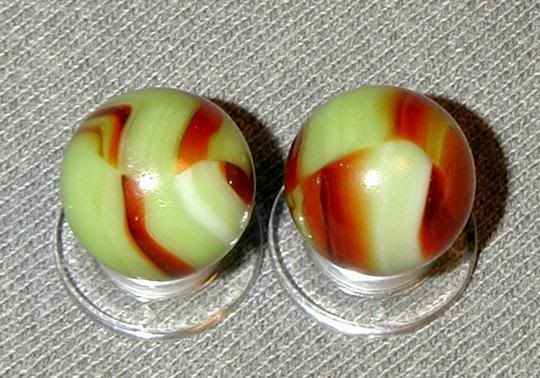
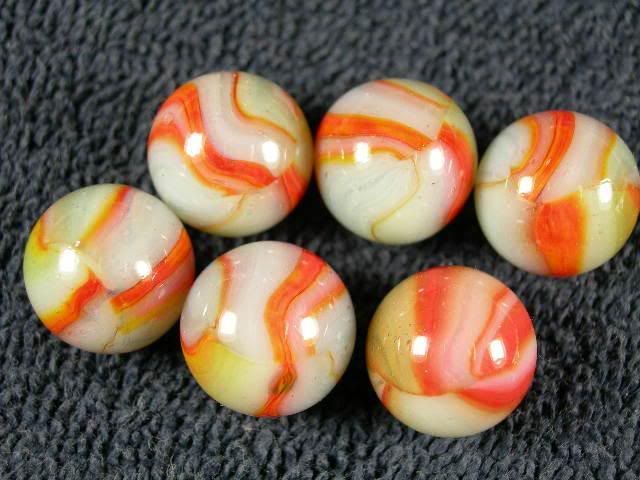
The mibs are all Carole's, but two used to be mine. :-)
-
Gotta love lavender.
-
So how are they made? Does anyone know the particulars?
I guess I have been thoroughly misled by the "bullet mold" name. It makes less and less sense the more I think about the seams. The blue spot looks a tad smeared at the seam in this view but mostly the frit ends abruptly. How did it get chopped off like that?
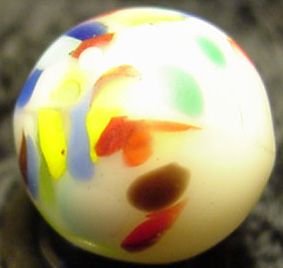
Carole, it would still be cool to see the part which looks like a pontil.
-
Thanks for the pix, Mike.
Always appreciated.
I agree with the notion that the etched ones which say marbles are fantasy. I need to reread the info but my overall impression was that some machines may have needed to be converted inside to be able to sell marbles but I don't have any reason to think the conversion involved saying there were marbles inside. And then some were designed to be more versatile, giving vendors the choice of what to sell. I don't think those would have been labelled specifically with the word "marbles". Why limit options?
I might try to gather some links, but for anyone who doesn't want to wait, check out Billboard magazine at Google Books. Make gum balls two words. Actually "ball gum" is a good search phrase.
-
There was a gumball shortage during WWII. Marbles filled the void. As their promoters said, marbles never went stale or rancid.
-
April 1932
The Popular Science issue with a short but nice article on the California Agate Co.
http://books.google.com/books?id=QSgDAAAAMBAJ
The item is on p. 51:
http://books.google.com/books?id=QSgDAAAAMBAJ&pg=PA51
Well, here's the article. I "clipped" it out for the thread I started in January, back when pretty much all we had to go on was the company name and rough date and a mistaken caption in newspaper file photo.
(click to enlarge)
Note: the man at work in the factory photo is not Frankie's father. This article doesn't actually say he is but it almost sounds like it does, and the caption of the photo we started with in January said it was Frankie's father. We still don't know who the man in the photo is. Perhaps he is in fact R. W. Walker as the caption in the other photo said.
Here's the thread I started in January, and bumped in February with a cascade of discoveries. :-)
California Agates -- Marble Mystery
I have learned a few more things, but the thread is choppy enough as it is so I'm letting the other info simmer a bit.
-
Oh yes, you could send them to someone who does remelts. For example, Joe Schlemmer of Mad Man Marbles.
-
Some make jewelry with marble halves.
They could also be used for some interesting pieces in mosaics.
You could put them in a shadow box.
Someone else I know put mint ones in resin for use as paperweights. THAT was sorta sad to me. But the messed up ones might be cool in paperweights.
Those which would have been valuable without damage might still be good to help with identification, for yourself or some newbie. Or you might feel free to bust 'em thorougly to study how they are made.
Ummm ... I think I had one more but it has slipped my mind.
-
1935
"More on Marble Names and Games", an article by Joseph Jones in American Speech, Vol. 10, No. 2 (Apr., 1935), pp. 158-159.
Published by: Duke University Press
Stable URL: http://www.jstor.org/stable/451751
(Accessible online for a price, but if you affiliated with an institution who subscribes to JSTOR you might be able to get it for free)
A snippet from google books:

-
Here are some Scarlet Orgasms Backacres posted some years ago.
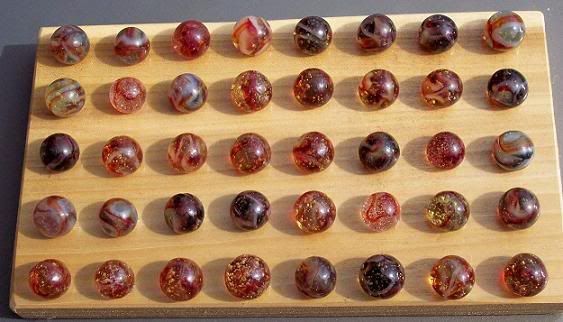
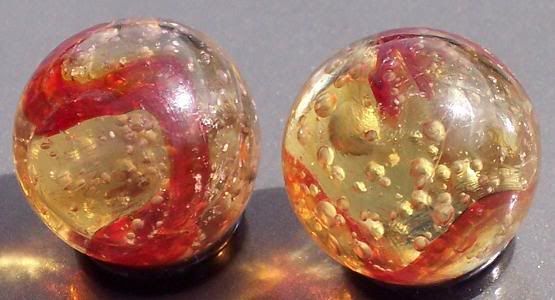
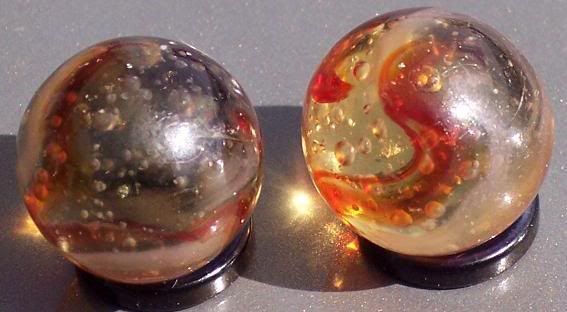
This bag was posted at LOM. Sorry, I didn't record whose it is. The blue and yellow ones at least were thought to be Cairo. Maybe all were?
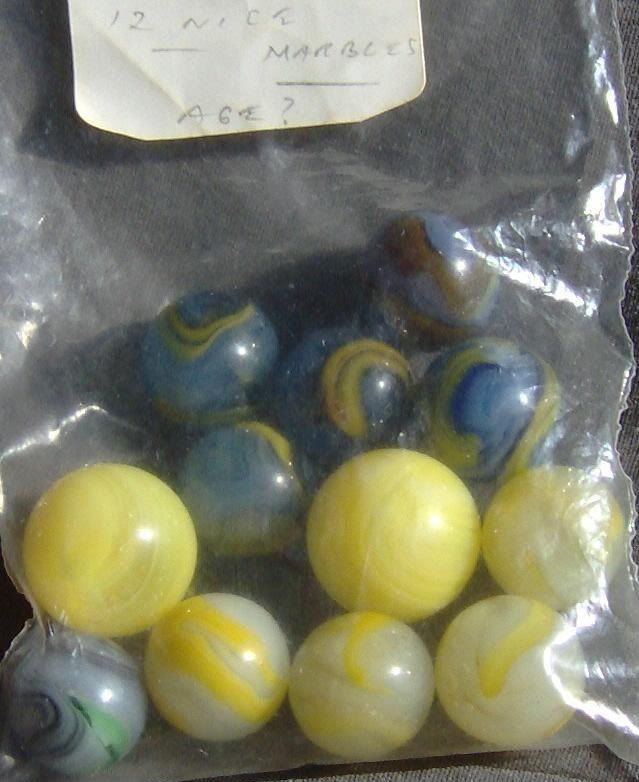
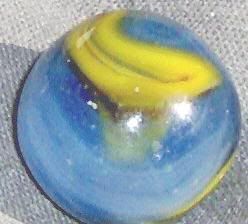
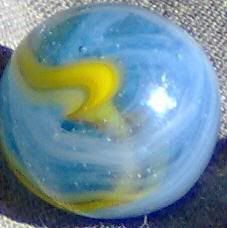
Here's one of mine where I think I finally cajoled most people into a Cairo Novelty i.d. (lol)

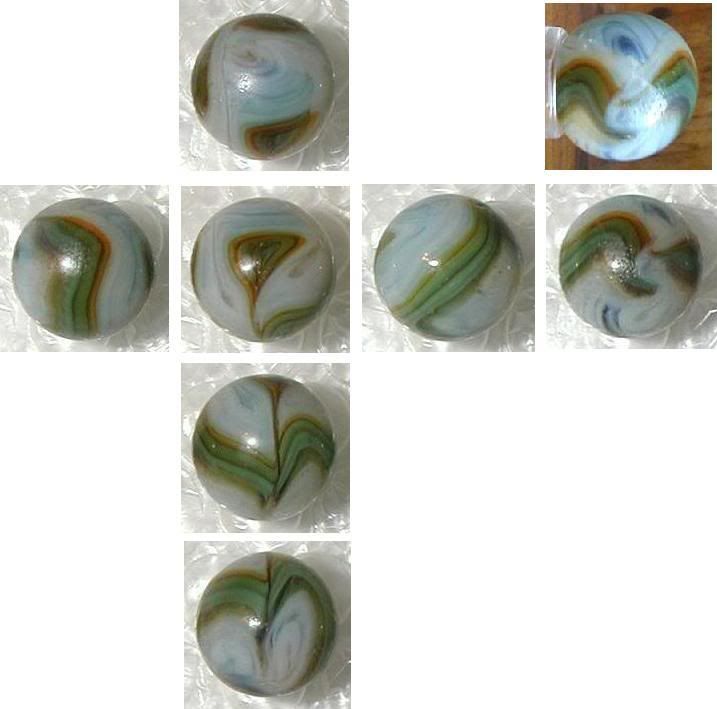
-
What a splash of spring color.
-
He's making bullets.
That's a REAL bullet mold. He is taking part in a re-enactment of some British battle. So I naively pictured marble molds as being hand-operated also. The 1880's description fit with my mental picture, and with my quick, mistaken reading of what Baumann wrote.
-
John, that's interesting that a machine might be involved in those too, at some point. Sounds like lots of different methods may have been used.
Here are the examples Baumann gave of different ways sulphides were made:
Most common was to have one worker gather a glob of glass and another press the figure into the glob, and if any part of the figure was uncovered the edges ofwould be work the edges of the glob would be pulled around the figure. Then it would be rounded in a marver.
For larger figures a small "ampoule" might be blown, then cut open, then the figure inserted with tongs, the opening reclosed, the ball reheated to round it, and the air "aspirated" out of the bubble with the blowing iron.
The third method he mentions involved putting a figure between two globs of glass and working that into a sphere with tongs and the marver.
Here's a British war re-enactor using a real bullet-mold, and part of the reason I thought of bullet-mold marbles as handmade:
(click to enlarge)
-
I almost voted for the bumblebee -- such a classic. But if someone asked me which one I wanted ... I wouldn't pass up the Hercules! lol


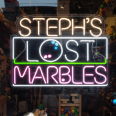




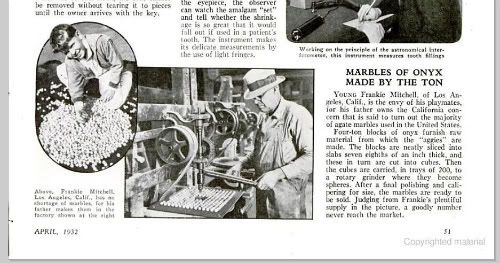
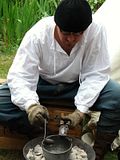
Dragons' Blood And Urinous Lixivium
in Steph's Study Hall
Posted
April 17, 1883
A. W. Roberts' classic, "Marbles and Where They Come From", published in Harper's Young People. That issue is online. Several versions can be found at archive.org: http://www.archive.org/details/harpersyoungpeop00newy1883.
The text can be found here.
The text was used and reused in newspapers and maybe other publications, with various amounts of editing. One example is this next one, in a New Zealand paper ....
November 12, 1898
From the Waimate Daily Advertiser:
The table of contents for the issue
The article